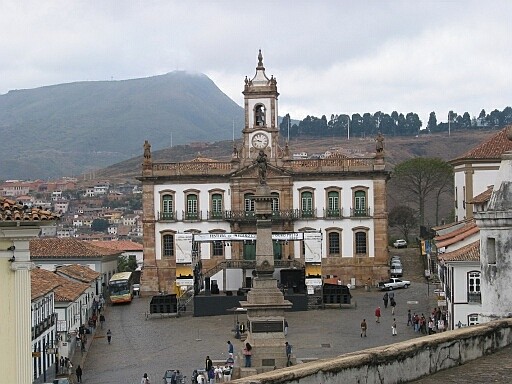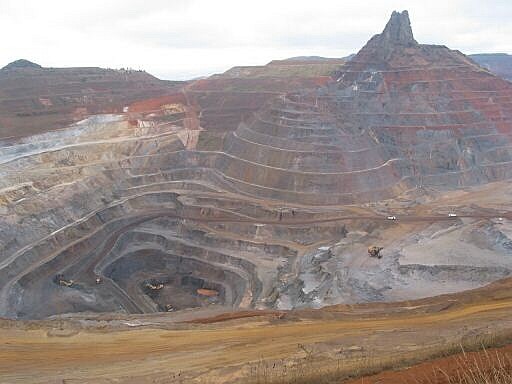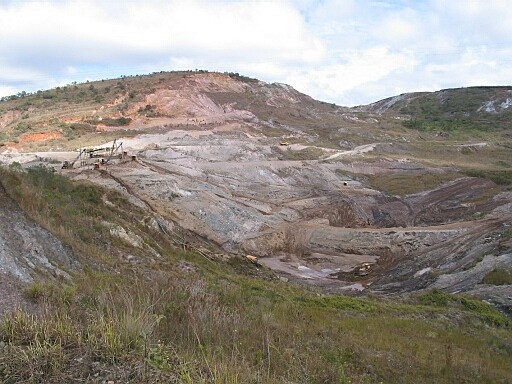

From Belo Horizonte we drove to the historic city of Ouro Preto (Brazilian web site) located in the mining districts of the state of Minas Gerais. This is a region famous for its tourmaline, aquamarine, topaz and other gem and minerals. First, we toured the famous town declared a world heritage site, and the mining museum.
Later, part of the group climbed a landmark mountain in the vicinity of the city.
The other part our our group went to a mining museum where a former gold mine was open for tours.
Later, this group went to the colonial town of Mariana and saw the interior of the restored church in the central city.

We visited the Mina do Pico and Sepacado iron mines near Itabirita where Carlos Spier, the mine geologist, told us about the mining operations of Minerações Brasileiras Reunidas S/A (MBR). The Mino do Pico produces about 30 million metric tonnes of Fe2O3 per year. The discovery summit of the banded iron formation was declared a state monument. From the edge of the Sepacado mine, we could see the colors of the different iron minerals (red = fine grained hematite; orange = goethite; black = coarse hematite).
We entered the mine for a closer look of the geology and to let the undergraduates tell their friends at Caltech that we were there. We examined the ore up close and we had pictures taken of our group in the scoop of a large shovel
We then examined the original surface of the banded iron formation as it existed before mining operations disturbed the surface.
The group next visited the Augas Clares Mine that was in the process of being filled with water to make a lake as part of the environmental recovery operations. The mine had to cease operation because on the far side of the wall of hematite the city of Belo Horizonte was encroaching.
Some sampling was conducted by part of our group with the drill cores to obtain specimens for age dating.

The next day, we drove out to two topaz mines in the vicinity of the small town of Rodrigo Silva. The first was the Capão Imperial Topaz Mine, a commerical mine that recovers imperial topaz from weathered topaz-quartz-calcite veins. Jaime Bruno, Jr., the mine engineer, showed us the operation of the mine. An operator used a large dredge bucket to bring ore from the open pit to a hydraulic washing station where fines are cleaned from crystals of imperial topaz and other minerals that are recovered from the sorting belt. We had a chance to see exceptional large crystals from the deposit. We could also sink our teeth into the mineralogy of weathering and collect our own quartz crystals.
Later in the day, we visited a smaller private topaz mine where we had a chance to enter the mine and hunt for specimens in the hope we would find topaz like the owners previously found. No such luck.
Back in Ouro Preto, we met with Professor Evangelista and others at the university in Ouro Preto to discuss their work in petroleum resource exploration and mineralogy. We also had a chance to haggle with street vendors and merchants over the prices of gemstones and mineral specimens.